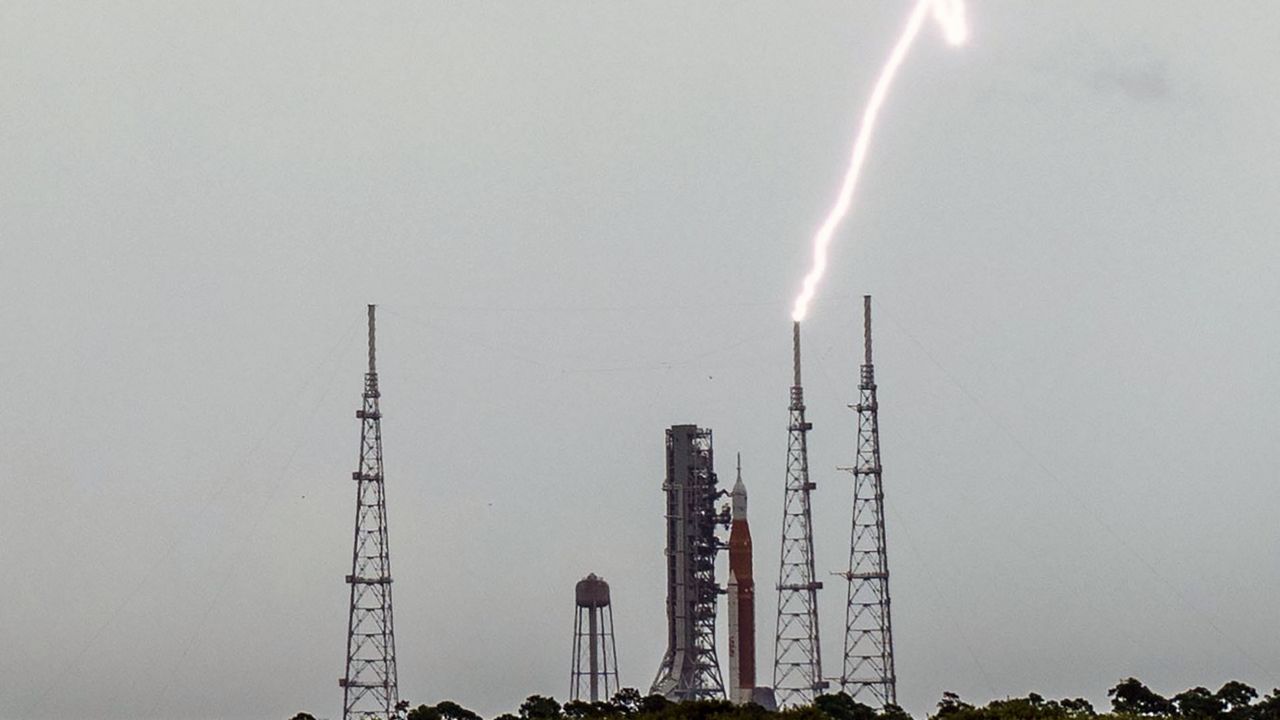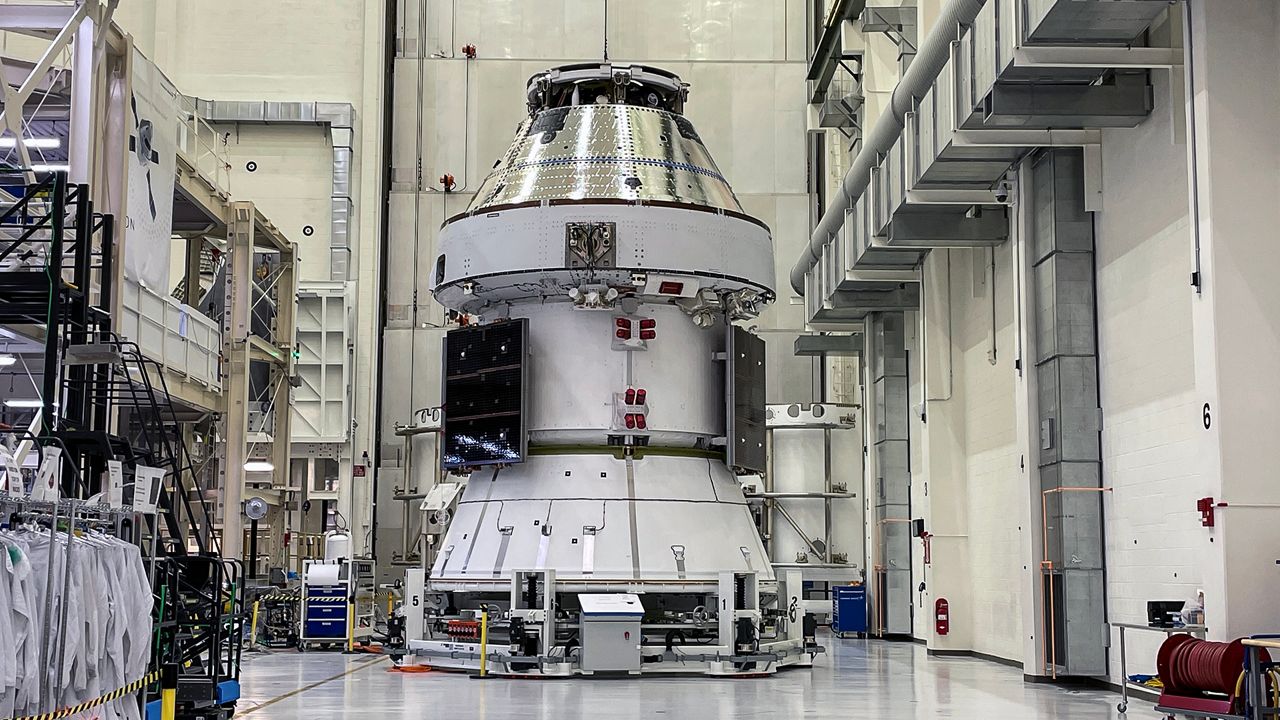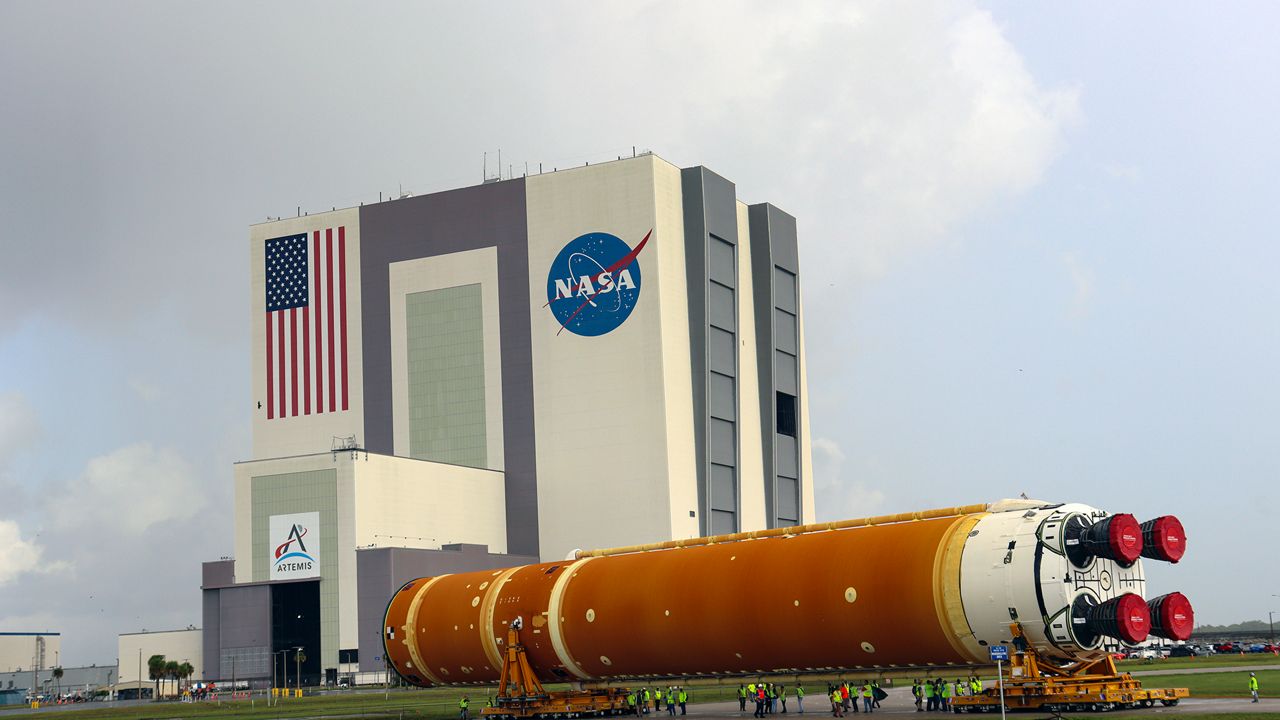KENNEDY SPACE CENTER — Lightning struck the Artemis launch pad protection towers three times during afternoon thunderstorms on Saturday, stated NASA.
What You Need To Know
- Lightning struck two of the three protection towers
- The towers are designed to protect the Artemis I rocket and spacecraft
- RELATED coverage: Understanding the Artemis I mission
Rain and thunderstorms blanketed much of the Space Coast and other parts of Florida, but NASA stated lightning struck two of the three lightning protection system towers that are guarding Launch Pad 39B — the temporary home of the Artemis I mission.
There are a total of three lightning strike towers, each standing more than 600 feet tall, with catenary wires — that run to the ground and are designed to direct lightning away from the rocket — positioned to protect the Space Launch System rocket, the Orion capsule and mobile launcher, NASA described.
On Saturday afternoon during thunderstorms, lightning struck Tower 1 once and Tower 2 twice, stated NASA.
NASA confirmed that a weather team and engineers evaluated data, constraints and equipment of the Artemis I launch.
While we were waiting for the @NASA #Artemis1 launch earlier today, Mark Burger of the #45thWeatherSquadron spoke to me about lightning strikes and protection towers. (See what happened on Saturday at #Artemis’ #LaunchPad39B.)https://t.co/K9EVrIgDHQ pic.twitter.com/XqyzowMgmq
— Anthony Leone (@AnthonyLeone) August 29, 2022
Spectrum News has reached out to NASA for an update on the team’s findings and the agency stated an update will be given during a live briefing at 9 a.m., Sunday. During that briefing, NASA said the Artemis I launch is a "go".
"At this time we are not, as a launch team, working any issues, any significant issues, so I am happy to report that and everything is proceeding on schedule," said Charlie Blackwell-Thompson, Artemis I launch director.
On Monday, NASA’s Space Launch System rocket is scheduled to send the Orion spacecraft from Kennedy Space Center’s Launch Pad 39B on a 42-day mission to the moon and back. It is the first step to returning humans to the moon.








